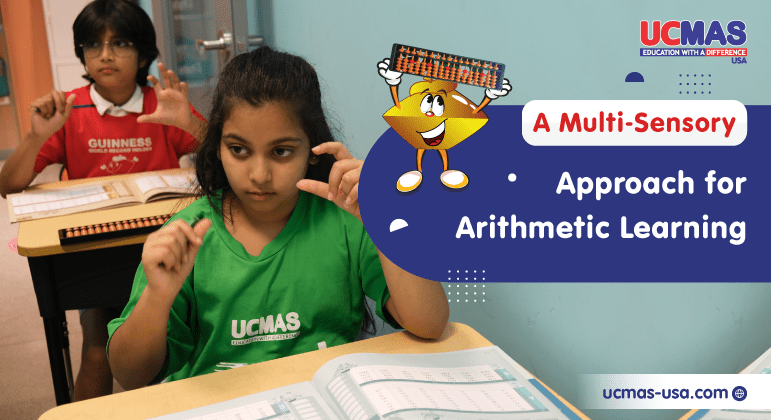In the ever-evolving world of education, educators continuously seek innovative methods to engage students and enhance their learning experience. UCMAS is here with one such approach that has stood the test of time and proven its efficacy is Abacus Math. Rooted in ancient history, the abacus has been used for centuries to teach arithmetic and develop mental calculation skills. Today, its multi-sensory approach is gaining popularity as a powerful tool to help students grasp mathematical concepts more effectively. In this blog, we will explore how using abacus math as a multi-sensory method can revolutionize how students learn arithmetic.
A Brief Historical Overview of the Abacus
The abacus, an ancient calculating tool, is believed to have originated in ancient Mesopotamia around 2700-2300 BCE. Over time, various civilizations, including the Egyptians, Greeks, Romans, and Chinese, adopted and adapted the abacus to suit their specific numerical systems. During the Middle Ages, it subsequently gained popularity in Europe. The abacus consists of a wooden frame with beads or stones that slide along rods, representing numerical values.
Understanding the Multi-Sensory Approach
The multi-sensory approach to learning emphasizes engaging multiple senses – visual, auditory, and kinesthetic – to facilitate better understanding and retention of information. By combining sight, sound, and touch, students can create strong neural connections, leading to deeper learning experiences. The abacus math method perfectly aligns with this approach, making arithmetic a multi-dimensional adventure.
Here are 7 Benefits of Abacus Math as a Multi-Sensory Approach:
- Visual Engagement
The colorful beads and distinct columns on the abacus offer a visual representation of numbers and operations. Students can see and manipulate these beads to comprehend mathematical concepts better. This visual element helps them build mental images and foster conceptual understanding.
2. Auditory Learning
As students move the beads on the abacus, they create distinct sounds that correspond to numerical values. This auditory feedback reinforces the association between numbers and their values, further solidifying their understanding.
3. Kinesthetic Learning
The hands-on nature of using an abacus encourages kinesthetic learning. As students physically interact with the beads, they develop muscle memory, promoting faster and more accurate mental calculations.
4. Improved Concentration
Abacus math requires focused attention to perform calculations. Regular practice enhances concentration and attention span, benefiting overall academic performance.
5. Speed and Accuracy
With continuous practice, students can perform calculations rapidly and accurately in their minds without relying on external aids. Their self-esteem and mathematical prowess are boosted by this newfound confidence in mental math.
6. Conceptual Understanding
Abacus math goes beyond rote learning and encourages students to understand the underlying principles of arithmetic operations. This deep understanding prepares them to tackle complex mathematical challenges in the future.
7. Boosts Brain Development
Research suggests that the multi-sensory stimulation provided by abacus math helps develop both the left and right hemispheres of the brain. This can lead to improved cognitive abilities, memory, and spatial reasoning.
Implementation in the Classroom
To effectively incorporate abacus math in the classroom, UCMAS teachers use a structured approach. Introduction of the abacus as an ancient tool for arithmetic and explains its components and functions. Allows students to manipulate the abacus physically and guides them through basic operations such as addition, subtraction, multiplication, and division.
UCMAS also organizes interactive games and competitions to make learning enjoyable and encourage healthy competition among students. Starting with simple calculations and gradually increasing complexity as students become more proficient, abacus learning helps students gain confidence, and encourages them to perform calculations mentally, visualizing the abacus in their minds.
The multi-sensory approach of UCMAS using abacus math offers an engaging and effective way to learn arithmetic. By combining visual, auditory, and kinesthetic elements, students develop a deep understanding of mathematical concepts while honing their mental calculation skills. Enroll your child now and instill proficiency in arithmetic and enhance overall cognitive development.


